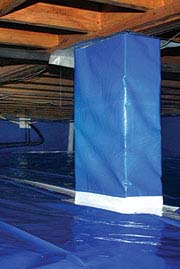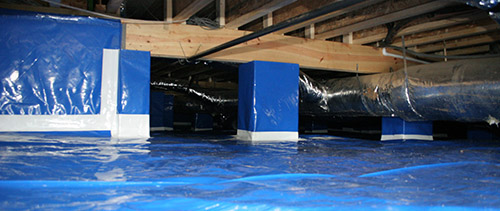The Key to Good Crawlspace Management

The Options
There are different methods that can be used to control moisture in crawlspaces. Of course, every case is different and each will have a unique cure, but it is safe to say that in every structure with excess moisture, there are several things that can be done to help the situation. There is no one cure-all that is the miracle answer to all situations.The key to prevent condensation is to either warm the surfaces or to lower moisture levels. Raising surface temperatures is typically not an option due to climate, occupant desires and, of course, the laws of physics.
More on Venting
Supposedly venting a crawlspace will help control moisture. In reality, venting will only help renew crawlspace moisture levels because the outside air generally contains more moisture than the crawlspace.
• Poor indoor air quality
• Energy loss
• Standing water (90% of building failure is due to moisture)
• Cupping on hardwood floors and movement of trim work and cabinetry
• Infestation of insects such as spiders, water bugs and wood destroying insects such as termites
• Energy loss
• Standing water (90% of building failure is due to moisture)
• Cupping on hardwood floors and movement of trim work and cabinetry
• Infestation of insects such as spiders, water bugs and wood destroying insects such as termites

Sealing a Crawlspace with VaporFree®
From a psychrometric standpoint, venting a crawlspace to remove moisture only works when the outside air is drier than the crawlspace air. “Drier” does not mean lower relative humidity, but rather a lower absolute humidity. Relative humidity is a ratio of the amount of moisture in the air relative to the amount of moisture the air can hold at a given temperature.

